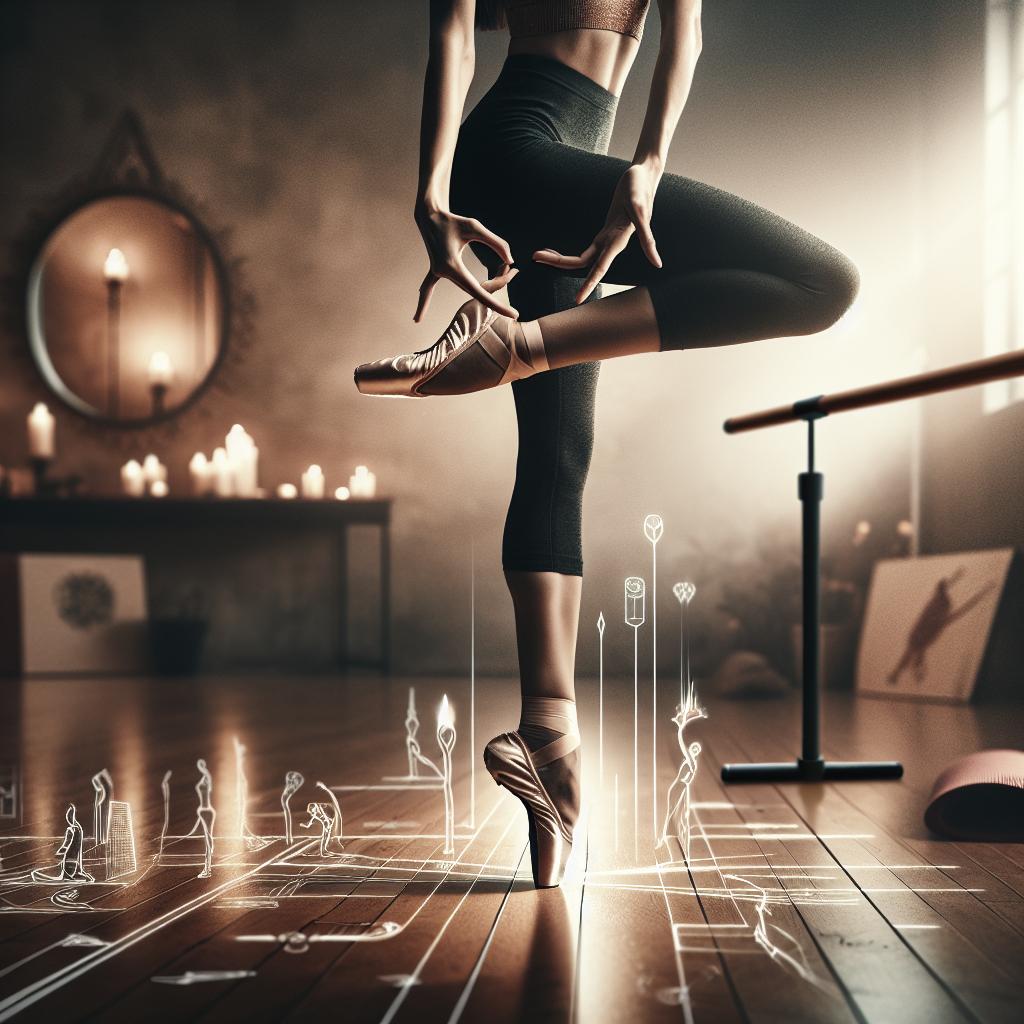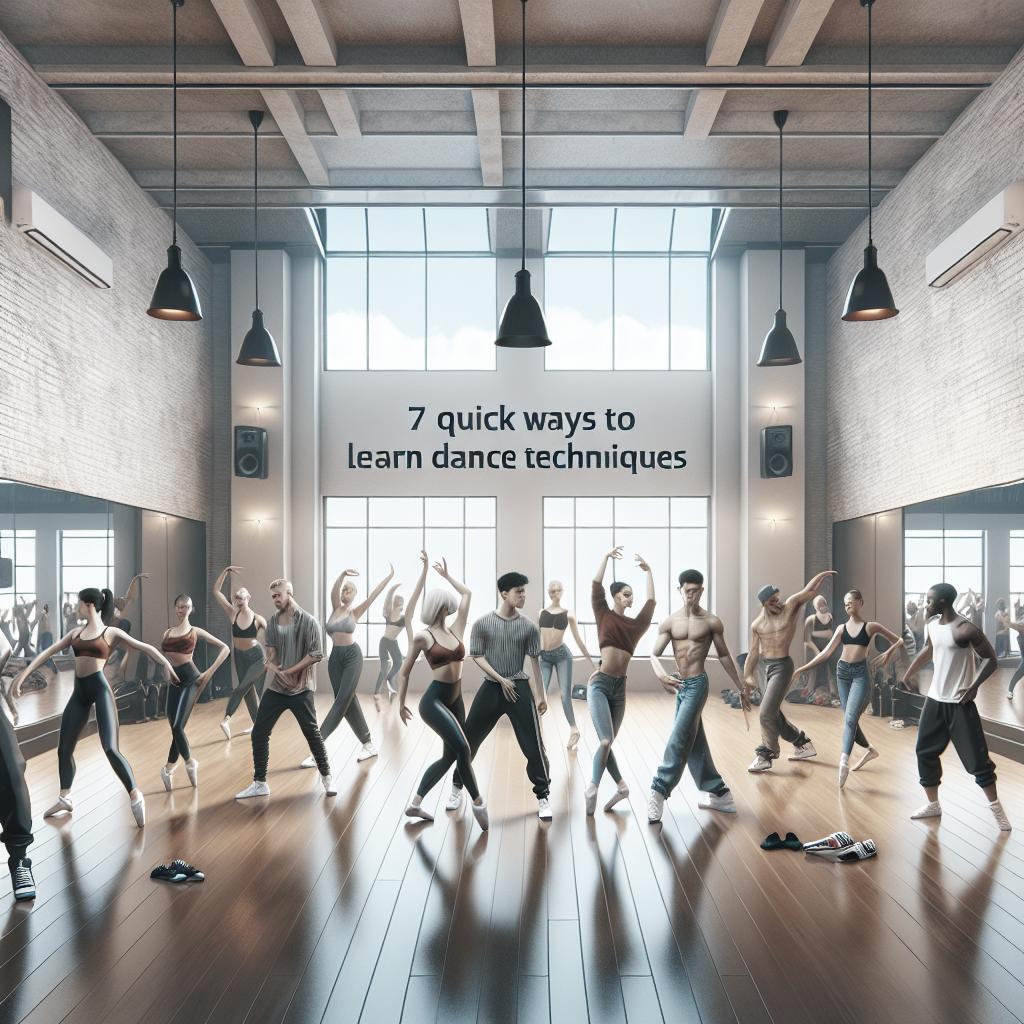Tips on How to Improve Your Balance for Dancing
Mastering the art of balance is crucial for anyone passionate about dance, whether you’re a beginner or a seasoned performer. Balance enhances your performance, helping to execute moves with precision and grace. In this blog post, we’ll dive deep into some practical exercises to hone your balance skills: the Single Leg Balance & Turn Out, Back Leg Lift from Bear Pose, Arm Raise from Bear Pose, and March with Resistance Band. We’ll also explore how building a strong core and glute muscles can support your dance journey by offering greater stability. By the end, you’ll have a comprehensive understanding of these techniques, which can be the foundation for your improved dance balance. So, let’s step into this dance of balance and grace together!
Single Leg Balance & Turn Out
The Single Leg Balance & Turn Out drill is fundamental in improving your awareness and control over body alignment. Begin by standing on one leg while keeping your pelvis neutral and your standing foot firmly grounded. Engaging your core is vital to maintaining balance. Stretch your free leg forward and ensure your knee is turned outward, forming a ‘turnout’ which is common in ballet and modern dance routines.
As you progress, incorporate movement by gently shifting your weight side to side and introducing graceful arm movements. The goal is not only to maintain your balance but also to do so while including complex movements that mirror the actual dance routines. This exercise not only strengthens the muscles around your ankle, knee, and hip but also trains your brain to maintain stability amid kinetic motion.
Consistency is key in this drill. Begin with a few seconds and gradually increase your hold as your balance improves. Finessing this exercise sharpens your proprioception, the sense that allows you to know where your body parts are without looking at them, which is crucial when performing intricate dance steps or routines.
Back Leg Lift from Bear Pose
The Back Leg Lift from Bear Pose is an advanced technique that accentuates strength and stability across your body. Start by adopting a bear pose—on all fours but with your knees elevated just off the ground. Make sure your back stays straight and your core is engaged to prevent lower back strain.
Once in position, slowly lift one leg behind you, keeping it straight and parallel to the ground. Hold this position for a few seconds before returning your knee to a hover. This movement challenges your balance and enforces muscular endurance in your supporting leg and core, which is beneficial for dancers aiming to hold poses steadily and gracefully.
As your skill develops, try incorporating alternating leg lifts without pausing the hovering position. This progressive overload ensures your muscles adapt and strengthen, contributing to enhanced balance. The back leg lift promotes muscular symmetry, which is pivotal for dances involving rapid shifts in weight and direction.
Arm Raise from Bear Pose
Similar to the leg lift, the Arm Raise from Bear Pose focuses on balance with an emphasis on upper body control. From the bear pose position, transfer your weight steadily to one side while you lift your opposite arm straight ahead.
Maintain alignment across your shoulders and avoid excessive torsion, which can destabilize your position. This exercise not only fortifies your core but also trains your body to maintain stability amidst changing conditions, as one arm being raised shifts your weight distribution.
By gradually increasing the duration of the arm raise, you can improve your shoulder and core endurance, fundamental when executing turns or extended arm movements in dance sequences. This exercise also promotes awareness of your body’s upright and horizontal planes, crucial for moving seamlessly across the dance floor.
March with Resistance Band
The March with Resistance Band works wonders in enhancing coordination and balance. Begin by placing a resistance band around your thighs, just above your knees, and stand with your feet hip-width apart. This setup activates your lower body muscles in preparation for the drill.
Begin marching in place, lifting your knees as high as comfortably possible while maintaining the tension in the band. The resistance band adds an additional challenge, compelling your muscles to work harder to maintain alignment and balance. This exercise is an excellent way to refine your control and stability when transitioning between steps.
Adjust the resistance for varying difficulty levels, and try incorporating lateral movements or forward marches to simulate dance routines. This comprehensive workout improves leg strength and overall body stability, translating to more fluid and confident dance motions.
Developing Strong Core and Glute Muscles to Improve Your Balance and Stability While Dancing
A well-conditioned core and glute muscles are the backbone of exceptional balance in dance. These muscle groups serve as the central support system for maintaining stability and posture during complex movements.
To target these areas effectively, incorporate exercises like planks, bridges, and squats into your routine. These workouts not only enhance muscle strength but also bolster endurance, ensuring that your body can withstand the physical demands of dancing for extended periods.
Furthermore, a strong core and glutes facilitate better posture and alignment, making you less susceptible to injuries. Consistently focusing on these muscles will increase your body awareness and transform your dancing skill set by allowing you to perform with more confidence and agility.
SUMMARY
The journey to improving your dance balance is multifaceted, involving exercises that target single-leg balance, full body coordination, and core strength. Through constant practice, the Single Leg Balance & Turn Out, Back Leg Lift from Bear Pose, Arm Raise from Bear Pose, and March with Resistance Band enhance your ability to execute dance movements with poise and precision. Strengthening your core and glute muscles serves as the foundation of this improved balance, providing the necessary stability for dynamic routines. Let’s review these exercises and their benefits.
| Exercise | Focus | Benefits |
|---|---|---|
| Single Leg Balance & Turn Out | Leg stability, Core control | Increases proprioception and alignment awareness |
| Back Leg Lift from Bear Pose | Core and leg strength | Enhances muscular endurance and symmetry |
| Arm Raise from Bear Pose | Upper body stability | Improves shoulder endurance and balance |
| March with Resistance Band | Coordination, Leg strength | Strengthens lower body, enhances movement control |
| Core and Glute Conditioning | Core and glute strength | Ensures posture, increases body awareness |


